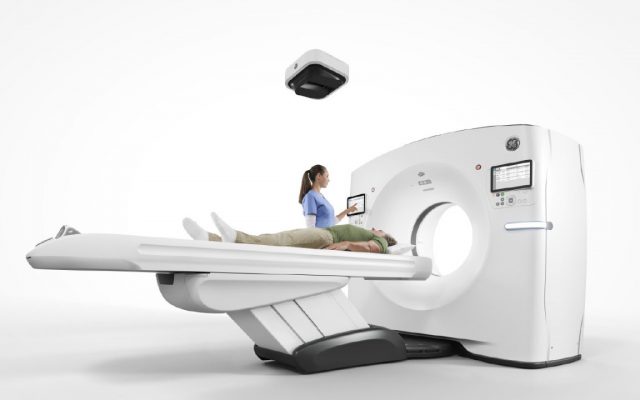GE is a corporate behemoth spanning multiple categories from Aviation to Healthcare to Power. The organization has a storied history and over the past few years has seen a number of significant moves, from new Executives to spinning off subsidiaries and underperforming units, in an attempt to return the organization to its heyday as a pillar of American ingenuity. GE’s Healthcare division continues, along with the Aviation group, to be a consistent performer delivering almost US$20 billion in 2019 with almost US$4 billion in profits. Employing over 50,000 employees, GE Healthcare is at the leading edge of some of the most profound advances in Healthcare, medical technologies and the digitization of healthcare services globally. Even before COVID-19 brought Healthcare to the fore for many countries, GE had a well-earned reputation for placing an emphasis on Learning & Development (L&D) in order to better serve their customers and to ensure their employees were able to perform in this fast-moving category. I had the opportunity to chat with Chris Lind, the Head of Global Digital Learning at GE Healthcare, from his home in Milwaukee and get his take on why Learning & Development is the most critical aspect of any Digital Transformation and why so few L&D engagements get the budget or focus they deserve.
HB: Chris, always a delight to catch-up with you mate. Having recently seen you as an avatar, sharing the stage with our mutual friend Matt Burns at the Global HR Summit, it’s great to see you in the flesh on this call.
CL: Yes, that was certainly an experience. Creating an avatar and then seeing it interact in this 3-D space with a global audience of HR peers, was definitely one of many novel 2020 experiences. Just like this Zoom call background (Chris’ background is from the “Top Gun: Maverick” movie featuring a squadron of F-18 fighter jets) which have just become a normal part of our daily interactions. 2020 has certainly normalized all sorts of behaviour we’d have raised an eyebrow at before.
HB: We could spend this entire call talking “Top Gun” movies but let’s start somewhere else. Can you give our readers some background on you and your role within GE Healthcare mate?
CL: Happy to. I always start a little further back because my journey to L&D (Learning & Development) was shaped by some early career experiences. So, going back to the very beginning, I thought I was going to be a software engineer because I loved technology and that’s what everybody told me I should do. And I got into it and I absolutely hated it. <Laughs> What I discovered was, aided by some wise counsel, I didn’t like making the tech, but I was fascinated by the way technology was changing people and those possibilities. But that wasn’t a thing. So people starting telling me, “since you understand this stuff, why don’t you go into teaching? Because you can help people and you can use technology and you can help others understand it.” So, I did. I taught eighth grade math and computers, and I realized this isn’t right either. It was like going to med school and knowing you don’t want to be a doctor. So, I went into sales next – when in doubt Sell – and I wasn’t really very good at that either. But the company noticed that I just naturally developed the people around me. Then the company said, “Hey, do you want to lead onboarding for us?” It was a light bulb moment because I never thought doing that could be a career.
That was my start in L&D and, because my early roles were customer-facing and had a very distinct P&L responsibility, I always had a very commercial orientation to L&D. If it wasn’t going to demonstrably impact the success of the business, why do it at all? When I landed at GE Healthcare there was a recognition that, for all the training the organization was doing, there was this amazing opportunity to take a hard look at what we were teaching, how we were teaching it and, most importantly, how we could or could not tie those training efforts to results in market and with our customers.
HB: For many of us outside GE it has this reputation as a sprawling Hydra of an organization. With an amazing reputation for succession planning and people development. Is that training, learning protocol part of what you tackle at GE Healthcare?
CL: You’re talking about the famous GE (Management Development) Institute in Crotonville in upstate New York where GE brings in leaders, and customers, clients, from around the world to learn about Leadership and explore new thinking in Leadership. However, considering the complexities of each of our various business lines, there is a deep seated Learning & Development ethos embedded in each of the companies that is unique and separate from Crotonville.
For our division of Healthcare, the category has really been flipped on its head in recent years. Even before COVID, we’re talking about the impact of machine learning and AI, advanced thinking around neural networks which our people not only have to understand but they also have to understand how to sell to some of the smartest and most focused healthcare organizations globally. Now, as we’re all trying to do everything remotely and virtually, we’re having to add new skills to our people so they can be effective in that environment too. If you will we’re in a constant race to up-skill our people in one of the most rapidly evolving areas of business in the world. It’s exciting but it is relentless.
HB: In many ways what you’re talking about Digital Transformation isn’t it? Healthcare, here in Canada, in the US, and globally is on an accelerated digital trajectory. From digitization of healthcare records to more digital delivery of health services – and that was before COVID made Zoom calls with your GP the norm.
CL: Zoom calls with your GP is just part of it. And that transformation is moving even faster. Right? To me, one of the biggest misnomers of digital transformation is people think it is about the tech or it’s about process improvement or it’s about process optimization and business optimization. The reality is digital transformation is about people, more than anything. It’s about the people, because when you really look at what digital transformation is, it’s the fact that you’re fundamentally changing how things work and function inside (and outside) your company.
Ultimately, everything you’re trying to do with digital transformation has to be carried out by someone. It has to be carried out by a human being. No matter how far we go with automation and all the emerging robotics stuff, at the end of the day, someone has to be the one to initiate it, to carry out that change, to actually move that change forward.
In my mind, the first thing with any digital transformation that we should consider is who are the people that are going to be impacted and what does that impact look like to them? Because if you don’t bring them in for the change, you can forget it. It will never happen.
I say that as someone who has been in organizations that have had an extremely well-defined purposeful culture. And I’ve been in organizations that have just let the culture organically develop and define itself. And I can tell you, the latter option is just a bad, bad idea. It’s a universally bad idea to just sit back and see what happens with your culture.
The other thing I’ve experienced repeatedly that adds real value to the culture piece is it gives you a foundation to help people articulate the rationale for change and for transformation. A way to anchor questions like “Why are we going through this change?” “How does this connect to something bigger?”
People often quote the “75% of Digital Transformation Fail” stat and I think that’s because organizations forget that when we want to change people, upskill or retool them, or change that part of their job they feel capable and competent in, a very natural fear factor kicks in. We think we can just throw technology at it and completely fail to take that very real psychological behavioral factor into account.
HB: You’ve spoken about deliberate and purposeful cultures who take this behavioural piece very seriously. Is that reflective of the GE Healthcare culture Chris? GE has a very storied history, but it would be fair to say the organization has struggled over the past 5 or so years. Can we talk about that?
CL: Sure, we can. I think like any organization, there’s tremendous opportunity here at GE to get this transformation stuff right. Or to do it better than we may have before. We’ve certainly gone through some culture change by all the different CEOs we’ve had recently. Just Google the name GE and you’ll read plenty of articles about the stuff that’s gone on here. Not all of it great and I think somewhere along the way, we got off track. That being said, I see real momentum to figure out how do we get back on track. And that’s created tremendous opportunity. Perhaps serendipitously my role has afforded me plenty of opportunities to be in the room where this gritty transformation questions are getting asked. In many conversations happening at GE Healthcare that revolve around “we need to move faster on this”, “we need to get going and just execute that” I get the chance to step in and ask, “what do our people need to be able to execute that?” And that’s never a soft and fluffy conversation, it’s a fundamental business conversation. After all, it’s our people that are going to enable that change – or they’re not – and if we fail to take them into consideration anything we’re attempting is doomed to fail.
HB: Agreed but there’s this inevitable paradox where the business operates at this 90-day cycle and wants everything immediately, or sooner, and behaviour change – particularly at scale – is never ever that fast. In your role at GE, how do you balance that or make your business leaders more appreciative of this?
CL: My counterintuitive answer is that, in a world obsessed with measuring everything quantitively, we need to better leverage the power of storytelling. Using stories to give more colour and more context to a situation before ruthlessly diving into the (more typical process) of defining boxes to check and numbers to calibrate. I genuinely believe that L&D leaders have to be incredible storytellers because I’ve been consistently amazed at the influence you generate when you can tell a compelling story about why an initiative or program you’re recommending, matters.
The other piece people in our L&D industry have lost sight of, I believe, is the fact that no-one better understands the science of behaviour change than us. That should be the area where L&D folks can (legitimately) claim to better understand, better manage and more demonstrably deliver an impact than anyone else.
The real science behind getting people to change their embedded behaviours should be our area of domain expertise. That means having both a compelling story but also a set of quant metrics that shows that behaviour is actually changing. If we want to put our mark on our critical role in any transformation, we should be focused on honing those skills. So while everybody inevitably wants it faster and faster, we need to be the counterforce saying here is a proven way to get people to change and this is how we do it in a coordinated way.
HB: What I’m hearing in that explanation is a more pragmatic approach – even a more collaborative and inclusive approach – to how L&D practises are tied into the business and business outcomes. Is that what you’re advocating for your L&D peers?
CL: That’s a really good question. Honestly you hit on two things that are really quite critical. On the pragmatic piece, I feel that way too often we over-engineer this stuff when sometimes the most effective things are the simplest, having a practical conversation and starting with basic questions. Simple questions like “what are we trying to do here?” “What’s it going to take to get there?” What does progress and success look like?” Rather than overly intellectualizing this stuff, make more effort to develop a basic dialogue between the business leader and L&D. If there’s one lesson I’ve learned, somewhat painfully I’ll admit, is I don’t talk academics. Cause business leaders don’t care about academic theory. They want to know you’re as fixated on outcomes as they are.
The other part where L&D can have a profound effect is around creating environments where failure is allowed, even expected and encouraged. As more organizations are placing big bets on innovation, that type of “freedom to fail” environment is crucial. Inherently creating that environment has everything to do with learning and, more importantly, highlighting what happens when something goes wrong or fails. There is a lot of work and research around psychological safety as a basic requirement for people to feel “comfortable” with failing.
Where L&D can help immeasurably is providing content, programs or case studies highlighting where failures have occurred before, showing that’s okay, but also to drive home the lessons learned from those failures so the entire company can benefit from those lessons.
That’s entirely aligned to the “development” part of our role. Being the curator of those experiences and experiments is another area where I think L&D can flex more than they may have historically.
HB: You’re absolutely right Chris. There’s overwhelming evidence that innovation can only happen in a culture that recognizes that experimentation – and inevitably failures – are a necessary part of growth. For someone more used to L&D programs that seem like an exercise in ticking a Compliance box – Yes, I have watched the 5hr video on fraud and bribery – this seems a very different way to direct L&D efforts.
CL: Absolutely it’s a (necessary) evolution and, I’d wager, anyone telling you they’ve cracked it and can give you the “Top 5 Things for a World Class L&D Program” is lying to you. Look at the tremendous pressure all of us are under to keep our people’s skills up-to-date. There is a constant uphill battle to keep workforce skills “current”. I feel like, in the four and a half years I’ve been here at GE Healthcare, we’ve made massive progress towards this. We’ve set up a solid infrastructure and have a vision that I believe can get us to a place where we can move at the speed of skills. Are we there yet? No, because I continue to see opportunities where we (GE Healthcare) gotta move faster over here, we gotta move faster over there. The reality is this part of L&D is never ever done. The pace at which skills are degrading, the pace at which they’re also changing, the pace at which new technologies are popping up.
Personally, what I found most interesting is that some of the biggest opportunities or new skills are not really that new. I look at what automation and technology is doing to the workforce and yet we concurrently talk a lot about resilience and adaptability. Those are inherently human skills. What we’re discovering though is that we thought people were really great at these (human) skills, when in reality, they weren’t quite as great or developed as we thought. As an example, look at communication. When everybody was in person, we all thought we were great communicators and we thought we communicated clearly. Boom. Overnight you now put people in a COVID and ZOOM-filled world. Guess what? Turns out people are really not that good at communicating after all. That was quite a hard lesson for many organizations, including our own, to learn. And a tough time to learn it while we’re all trying to quickly adapt to this new reality.
So, now put that through a L&D lens. I had never anticipated that we might have to teach people how to do fundamental skills that have been around forever. We hadn’t really thought, how do you train for this and how do we create this “new” training because, prior to March 2020, we hadn’t faced that challenge. It’s been fascinating to watch this unfold. This belief that because we’ve been doing something organically for hundreds of years – be it communications, be it collaboration – that we’re obviously great at them and that we could quickly adapt. In truth we may have been good at them in previous situations, like a boardroom where we had body language, proximity, eye contact etc, but now over 8 hours of Zoom calls daily we aren’t great communicators in that context.
HB: Having experienced that myself, as have all of us in Zoomland, I can attest these very basic human skills we’ve taken for granted need a swift re-learning even.
CL: Bingo. <Laughs> What we’re dealing with now is this crazy dichotomy. We still need to teach people new things. We still need people to learn how to learn. Increasingly though, I think we’re going to need to teach people to unlearn just as much. Unlearn the previous habits or skills they historically took pride in, so they can learn critical new skills. Bizarrely this exercise of “unlearning” is one we don’t pay nearly enough attention to.
And, in the spirit of the digital transformation conversation, how do we get our people to drop things that are holding them and the company back?
The reality is that some of the biggest inhibitors to these transformations, to these changes, are our people are holding on to bad information. They’re holding onto the wrong way of doing things, or maybe it isn’t wrong. It just doesn’t work anymore.
HB: I’d not really considered this discipline of “unlearning” but, now you’ve raised it Chris, it does seem a vital capability for any organization. So, I always ask my interviewees this question. What advice do you give to your fellow L&D peers? Or to organizational leaders who’ve been using L&D as some weird extension of regulatory compliance, what do you wish they’d do to build a genuine L&D competency?
CL: Speaking candidly, as an industry we are notorious for pointing fingers and saying, well, the business doesn’t get learning and development, the business doesn’t understand the value that we bring and they’re not utilizing us well. Personally, I think one of the greatest things that I got feedback on early in my career was stop it, look in the mirror and ask, well, why not? And there’s a good chance. You’re part of the problem. And so when I ask why aren’t organizations doing that, why aren’t they using L&D more effectively, I would say a lot of times it’s because they haven’t been shown what a powerful strategic L and D organization can do. That’s on US to show them, to prove our worth. And that is strategic worth to the business, to the business outcomes our peers are trying to accomplish.
As learning and talent leaders, this is where we must seek every opportunity to get it right. To make the connections between what we do and what they’re trying to get done. To show them the evidence. To bring the business leaders the proof. As I said earlier, to find a way to get into those early conversations where they’re mapping out their destination and show how what we do can ensure they get there faster, better, more efficiently, more effectively.
Trust me when an organization is looking to make cuts, the first place they always look is to the places where the impact has not been shown, where the investment in time and money hasn’t paid out. Done properly, L&D should never be a place where real impact can’t be shown.
To your earlier comment about L&D often feeling like an exercise in Compliance, I would say a large majority of that falls on us too. We say we want a seat at the table, yet we don’t behave in a way that gets us invited to that table. How many L&D conversations have you had where somebody sat down and said, “Let’s talk about what you’re trying to do; Let’s talk about the impact that’s going to have. And what exactly do you need people to do to achieve that outcome?” If you’re having THAT conversation with the business and can back it up with a compelling story, as we discussed earlier, and a set of rigorous metrics that highlight where L&D actually did deliver real behaviour change, there’s no business leader who wouldn’t want you at the table every single time.
This is really really hard stuff – and, as we’ve discussed, it’s getting even harder with COVID and with the speed and complexity of change. <Laughs> I mean I don’t have any hair for a reason you know. This is something that is just brutal but you have to be relentless about it. So when I get told, no, I’m going to take that as a not now rather than an out and out dismissal. And I think that adaptability and a relentless drive is something that you’ve got to find because that’s the only way you’re going to make it.
HB: That’s some really unambiguous direction mate. Any final words as we come up on our allotted time?
CL: Yeah, one final reminder which is that we’re only here to serve the business. That’s not necessarily a popular message. We want to be in charge. We want to lead this stuff. When, in reality, we are merely here to serve and enable the employees of our business. That should be your number one focus. If you do that. And you’re relentless about doing that and you don’t give up, that’s the kind of stuff that makes business leaders look and say; “I need that person with me; I need that group by my side every time”
HB: Always a pleasure Chris. Thank you so much for your time, your insight…and for the opportunity to see the real Chris Lind rather than his brilliant avatar. Take care my friend.
CL: You too Hilton. Always fun. We’ll chat soon.
Article by channel:
Everything you need to know about Digital Transformation
The best articles, news and events direct to your inbox
Read more articles tagged: Culture, Learning & Development










